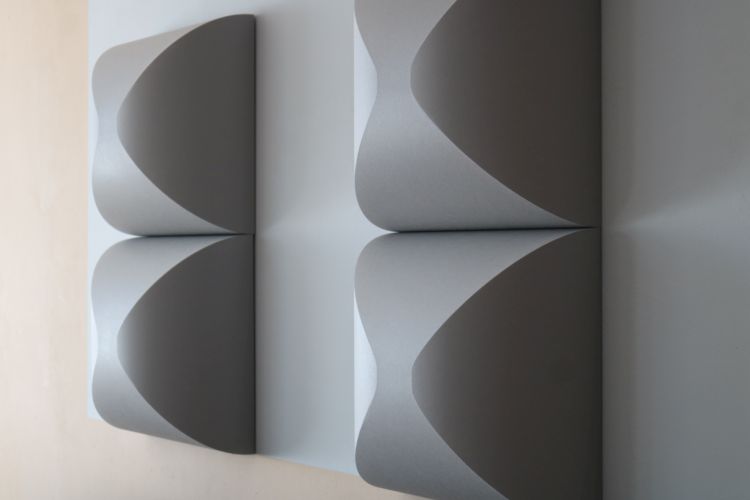
Also treating the rear wall
After finding the direct reflection positions and the range of the horizontal spread on the rear wall, I started by adding two SiRRAHs in the places where the reflected sound would directly reach my ears.
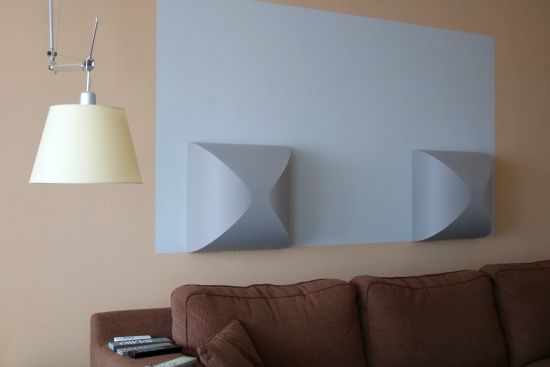
Bull’s eye! Just like with the first two SiRRAHs on the front wall, these two on the rear wall made all the difference. Gone was the remaining flutter echo, replaced with much more order to the soundstage and a significantly better focus of vocals and other sounds that are recorded in mono. Now, the Logans were coming a lot closer to the reach-out-and-touch 3D imaging capabilities that many dynamic speakers seem to do so much more easily.
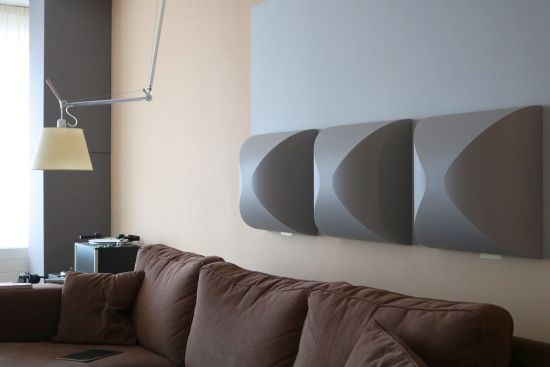
But, as with the experience on the front wall, some residual lively reverberance was exposed now that the sides had been taken care of. It’s amazing how easily the ear can tell where a problem area is, once part of the issue has been dealt with. Adding a third SiRRAH in the middle evened out the reflected sound and provided a nice, uniformly behaving sound bubble. It was better but I wasn’t sure if this was the way to go.
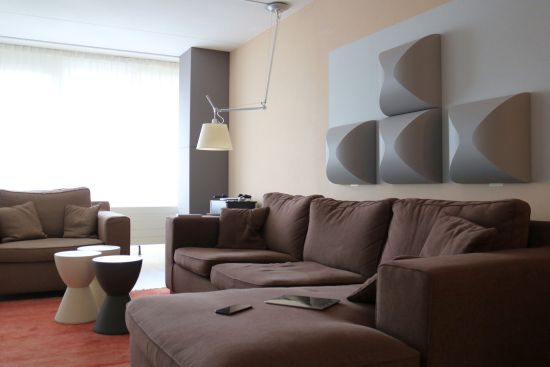
Although the advantage was great and the side-effect subtle, the centrally-placed SiRRAH did take away just a little bit of sparkle and liveliness.
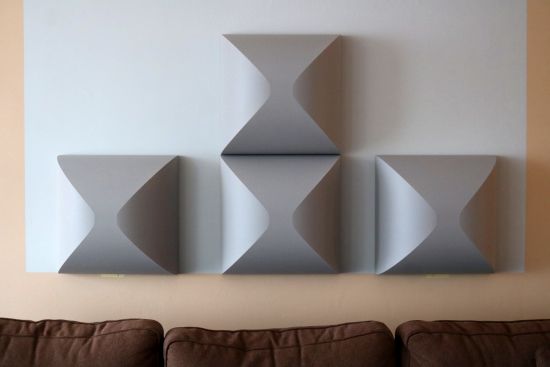
It was nothing like the effect of the couch cushions when I tested them in the same position but when adding another SiRRAH on top to make for three vertically-stacked rows, I did feel that there was too much damping going on behind my head.
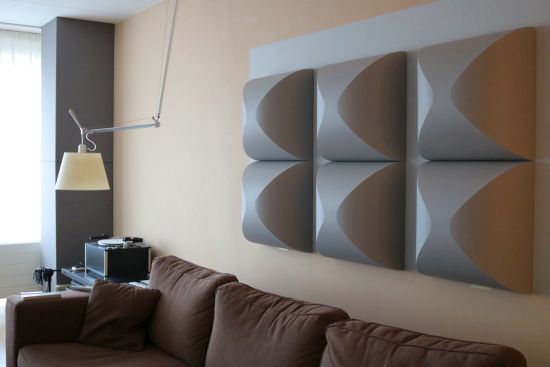
Because it looked so nice and because I just wanted to know, I proceeded by adding two more SiRRAHs but this confirmed that there was indeed an ideal number of units to use for this wall.
Fine-Tuning
Knowing now that I needed two rows of two vertically-stacked SiRRAHs, it was only a matter of finding the ideal horizontal positions. After all, in their initial positions, the results in the left and right portions of the rear wall were amazing but that left me with a portion in the center that was still standing out by being too lively.
In itself, liveliness can be nice, in some cases even essential. In this case, though, the experiments with the SiRRAHs have shown that the uncontrolled reflections also add blur and mess up the focus and other aspects of the soundstage.
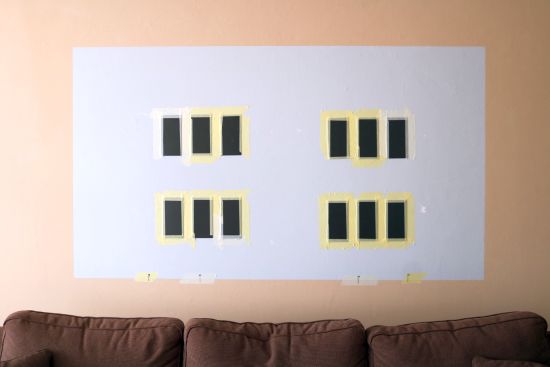
The grey rectangle on the wall is actually what I used as the projection area for the beamer when my setup was still rotated by 180 degrees. I never got around to painting it over and now I find that it actually enhances the artful presentation of the SiRRAHs.
In order to find the ideal positions, I attached multiple fixation sheets closely together so that I could freely position the four SiRRAHs in any horizontal position. Then, the listening started.
As I anticipated but had to try anyway, spacing them out further only increased the audibility of the uncontrolled reflections in the center area. But when moving them closer, all of a sudden I hit the jackpot. Boom! Even though there was still an amount of empty wall between the two stacks the size of a single SiRRAH unit, all of the perceived reflections in the center were gone. And along with it came even better focus and bass articulation.
Wrapping it up
Since my issues were the result of using dipole loudspeakers in a room with two reflective walls, it had been more difficult than it normally would be to arrive at the ideal composition. But I also found it hugely interesting to hear the result of every step that I took. Essentially, Martin Logans are line sources. They are quite beamy but their curved stators do spread out the sound roughly over the width of a 3-person sofa. Although I initially thought that my flutter echo issue was caused by the speakers’ rear-firing sound, it turned out to be caused only by the sound coming from the front, spread throughout the room horizontally. Part of this sound bounced off the rear wall and right into my ears while another part of this sound (angled more to the sides) went past my ears and ended up on the front wall again, only to be reflected back at me, causing the flutter echo in the process.
What I arrived at to effectively solve this, while improving many other aspects of the sound, was a mix of front-wall and rear-wall damping/diffusion. The front wall (behind the speakers) ended up with a single row of two stacked units that took care of the part of the speakers’ forward-firing reflections after they had been reflected off the rear wall. Meanwhile, the rear wall (behind the listening position) ended up with two rows of two vertically-stacked units to take care of the part of the direct reflections.
As it followed, the center part on the rear wall did not need any damping because the front wall already took care of that. And vice versa for the left and right sections on the front wall.
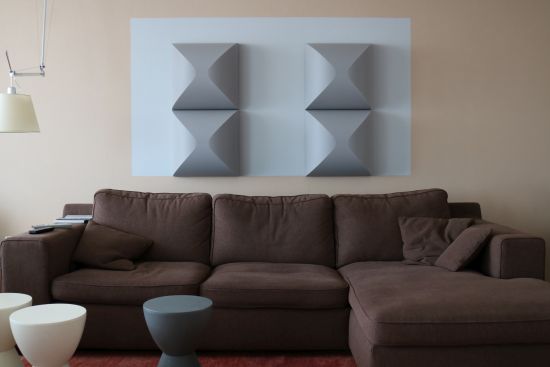
There you have it: the final positions for the SiRRAHs on the rear wall.
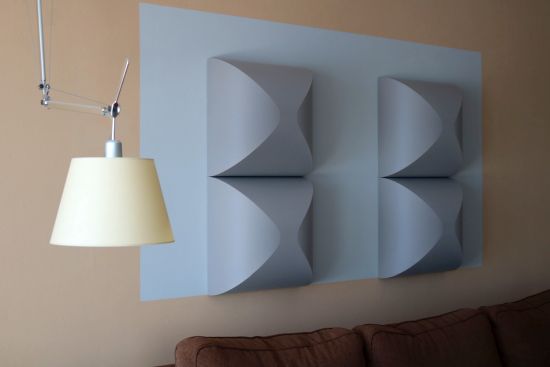
Conclusion
Please read this story as the adventure that it is, don’t let it discourage you from starting work on treating your own room. See part one of the SiRRAH review for a much more common room and, consequently, a more typical solution.
Given my unusual situation, the solution that I arrived at is perhaps also a little unusual. But the results are staggering and absolutely worth the effort. These include clearer bass with better articulation, deeper and more even soundstaging with clearer layering and much better focus. The real beauty of the SiRRAHs, as opposed to every other damping or diffusion product that I used so far, is that, when applied sensibly, they bring all the benefits without any negative side effects. That, and they look like beautiful pieces of art!

Manufacturer’s Comments
A Schroeder Diffuser acts as a diffusor because the sound is reflected from it at different angles and at different times. This creates the huge sound field these diffusers are known for. That is very important in an opera hall. But it is a false hugeness in a listening room which has two big disadvantages.
If you sit too close to that type of diffuser you can hear the different sound waves reflecting off it at different times. Depending on how deep the diffuser is the more distance it takes for these different sound effects to become a „cloud of sound“ which creates a huge sound.
That chopping of sound in the time domain, however, leads to much less focus. At first, it is impressive that the soundstage of the orchestra becomes so big. But then you realize that you cannot hear where the first violin is located exactly.
More SiRRAH
External Links
AcousticMatters website: AcousticMatters
R.T.F.S manufacturer’s website: R.T.F.S.de
Dealer for the Netherlands: ListeningMatters
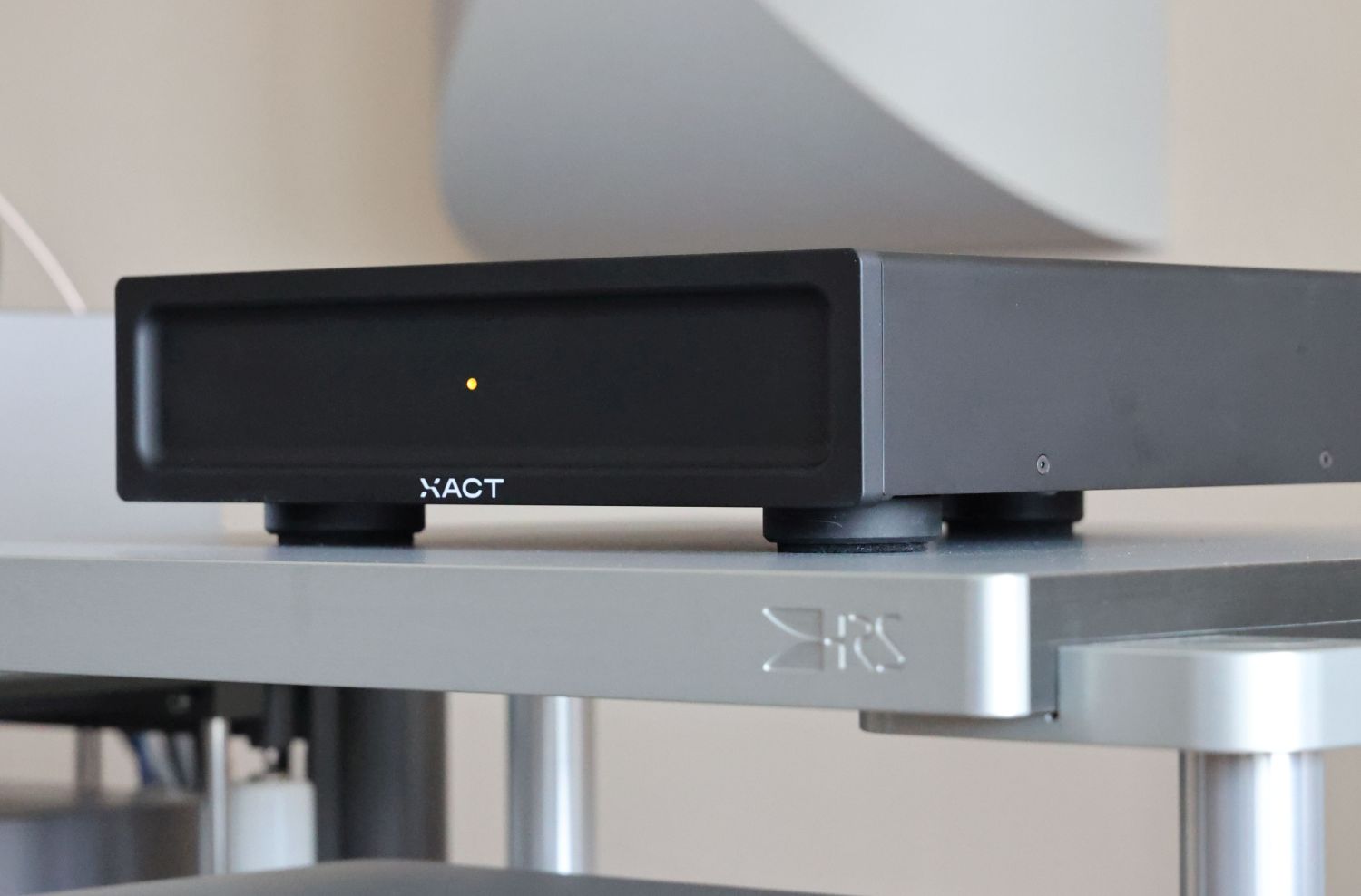
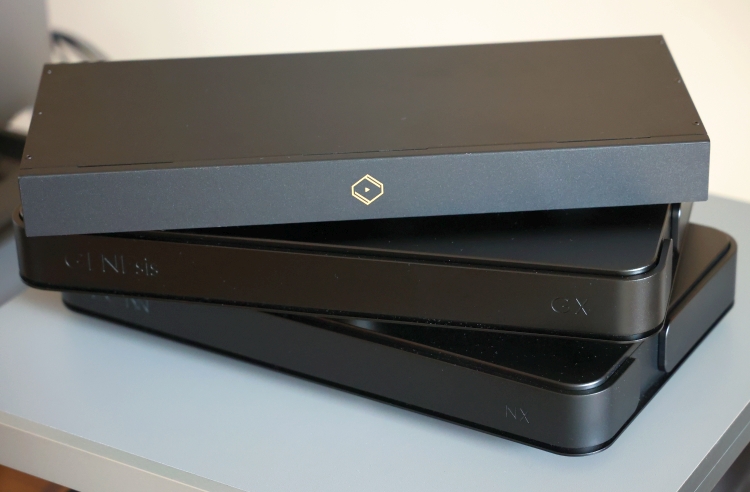
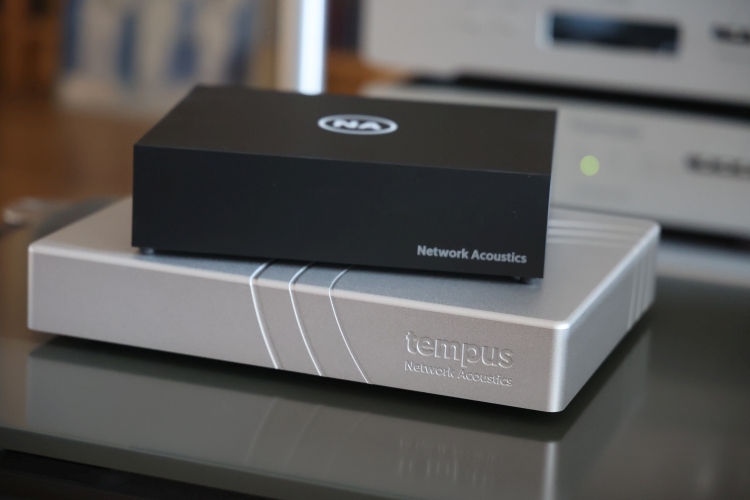

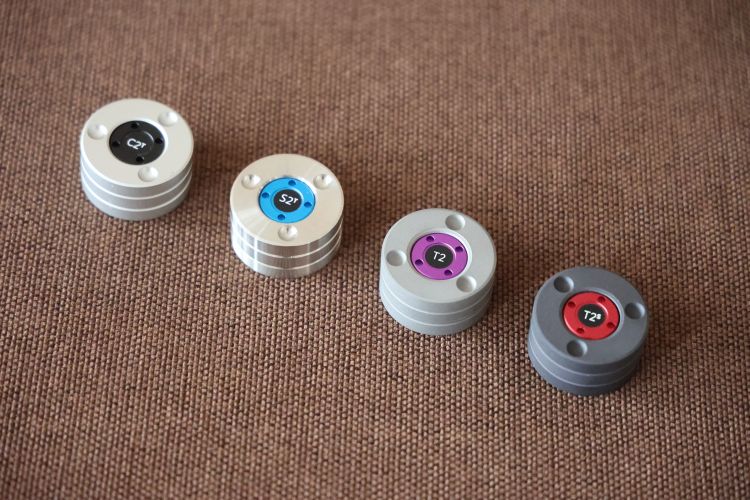
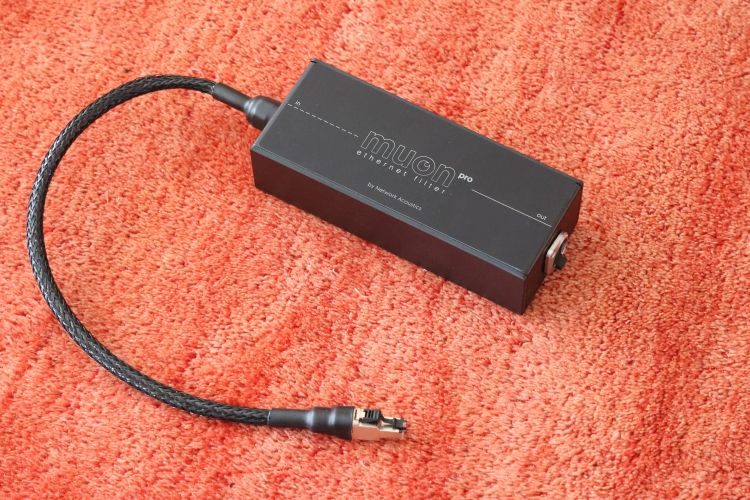
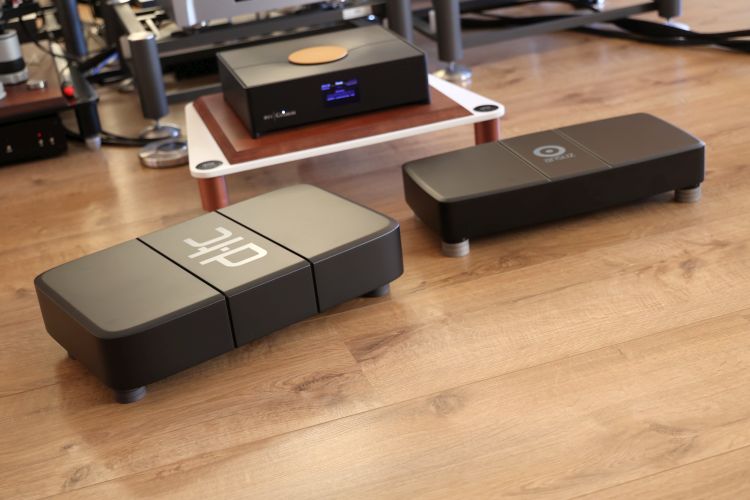
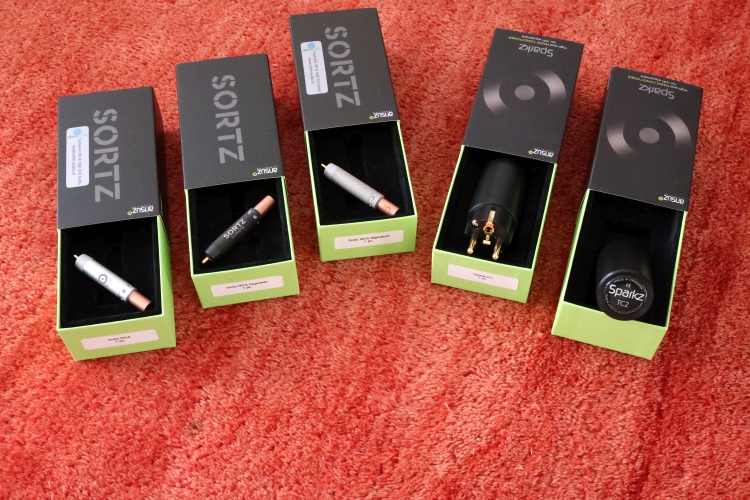
Excellent review! I currently have several GIK bass traps and Alpha Series diffusers in my room. I am very interested in trying the SiRRAH panels. Do they sell them to United States customers?
Thanks!
Hi Sean, alas, I cannot help you obtain these products but I’m sure the manufacturer can point you to a reseller.
Christiaan,
I tried to contact the manufacturer today and I have a relative that lives in Berlin attempt to contact them as well with no response. Do you have a reseller in the Netherlands that I can contact to see if they sell to customers in the USA?
Thanks again!
The Dutch reseller is Listening Matters but I’m not sure if they’d ship to the USA.
Christiaan,
I used the link you shared for Listening Matters and it was not in English. Is Listening Matters and Acoustic Matters the same company? If so, I sent Acoustic Matters a message through their website and I hope to get a response.
Lastly, I read your review of the Martin Logan ESL 15A. I have two (2) relatives that have Wilson Audio speakers and I debated on buying a pair of used Wilson’s, Martin Logan’s, B&W, and Pure Audio Project Trio 15 or Quintet 15, but I decided to go with Spatial Audio X5 open baffle speakers. Curious if you ever heard the offerings from Pure Audio Project or Spatial Audio? If not, try to get your hands on a pair for a review. Some say they sound like Maggie’s, but more dynamic. I never heard a pair of Maggie’s, so I don’t have an opinion. I’d like to read your review on the open baffle designs mentioned above.
Thanks!
Hi Sean, they are liaised. I’m sure they will get back to you now. I’ve heard many open-baffle dynamic speakers and while they share the kind of freedom from box constraints in a broadly similar way as Magnepans or other foil speakers, they do not sound like one another in any other way. Ribbon bass, midrange and treble are just a very different breed from that of dynamic drivers. There are too many factors to get in here but perhaps the biggest one is bass driver surface. Basically (and intentionally leaving lots of variables undiscussed for now), in an open baffle, you need plenty of it to overcome the acoustic cancellation that occurs naturally between front and rear. With a woofer that is too small, it will need to overcompensate in excursion and that leads to softness, rounded transients and overall slowness.
Christiaan,
You are hitting the nail on the head with the acoustic cancellation you mentioned concerning open baffle designs (OBD) if they are not designed properly or too close to the front wall. Clayton Shaw of Spatial Audio and Ze’ev of Pure Audio Project (PAP) are fully aware of those issues and I think these guys have managed that issue well, at least Spatial Audio. I haven’t heard the PAP speakers yet. OBD speakers need to be about 4 feet off the front wall to turn the listening session into a magic show. My Spatial Audio X5’s are incredible and I’m sure the X3 model are a step up in bass with the built in active 15 inch open baffle subwoofer. My X5’s have a built in 12 inch open baffle subwoofer. There is nothing slow about these speakers at all. If you get an opportunity, give the Spatial Audio a listen and see if they have addressed the things you mentioned. A guy name Ron has a YouTube channel called “New Record Day” and he goes in depth about the Spatial Audio speakers. Check it out at your leisure. There are several YouTube videos with Clayton Shaw interviews, discussing his OBD speakers.
Thanks and take care!